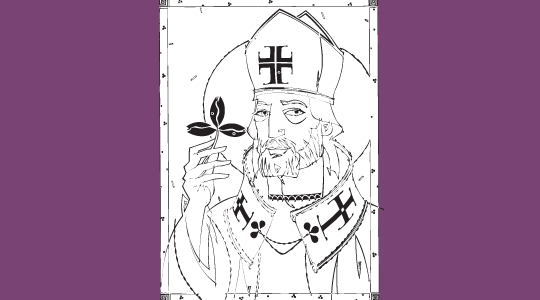
St. Patrick’s Day falls smack dab in the middle of Lent and, for many, is seen as a “day off” from Lent. A quick search for St. Patrick’s Day activities reveals mainly opportunities to color shamrocks, leprechauns, rainbows, and pots of gold; very little of spiritual value is offered. As catechists, we can still have fun with our young people on St. Patrick’s Day while also teaching something of spiritual value. Here are a few brief ideas, constituting your next Lenten Activity.
A Spiritual St. Patrick’s Day
- St. Patrick, who was not Irish, was held as a slave in Ireland for 6 years. Upon gaining his freedom, he entered the Church and then decided to return to Ireland, holding no grudge. St. Patrick’s Day, therefore, is a good opportunity to focus on the idea of forgiveness and letting go of grudges.
- St. Patrick is responsible for the conversion of countless numbers of people. Lent, of course, is a time of conversion for all of us. St. Patrick’s Day is a good opportunity to focus on our own call to conversion.
- St. Patrick is known for his famous prayer: the Breastplate of St. Patrick. St. Patrick’s Day is a great opportunity to introduce young people to this prayer and to invite them to take it to heart (memorize it).
- St. Patrick was a missionary and St. Patrick’s Day is a perfect day for inviting our young people to pray for missionaries and to learn about Catholic missionary activity.
- St. Patrick is known for using a 3-leaf clover to explain the Trinity…use this day as an opportunity to help young people understand the Mystery of the Trinity: Three Persons in One God – a loving community of Father, Son, and Holy Spirit.
- On St. Patrick’s Day, we celebrate all things Irish. One popular symbol of Irish heritage is the Celtic Cross. Invite children to create a Celtic Cross. Instructions may be found by doing a Web search.
St. Patrick’s Day does not have to be a day off from Lent; it can be a wonderful opportunity to teach about our Catholic faith.







Be the first to comment